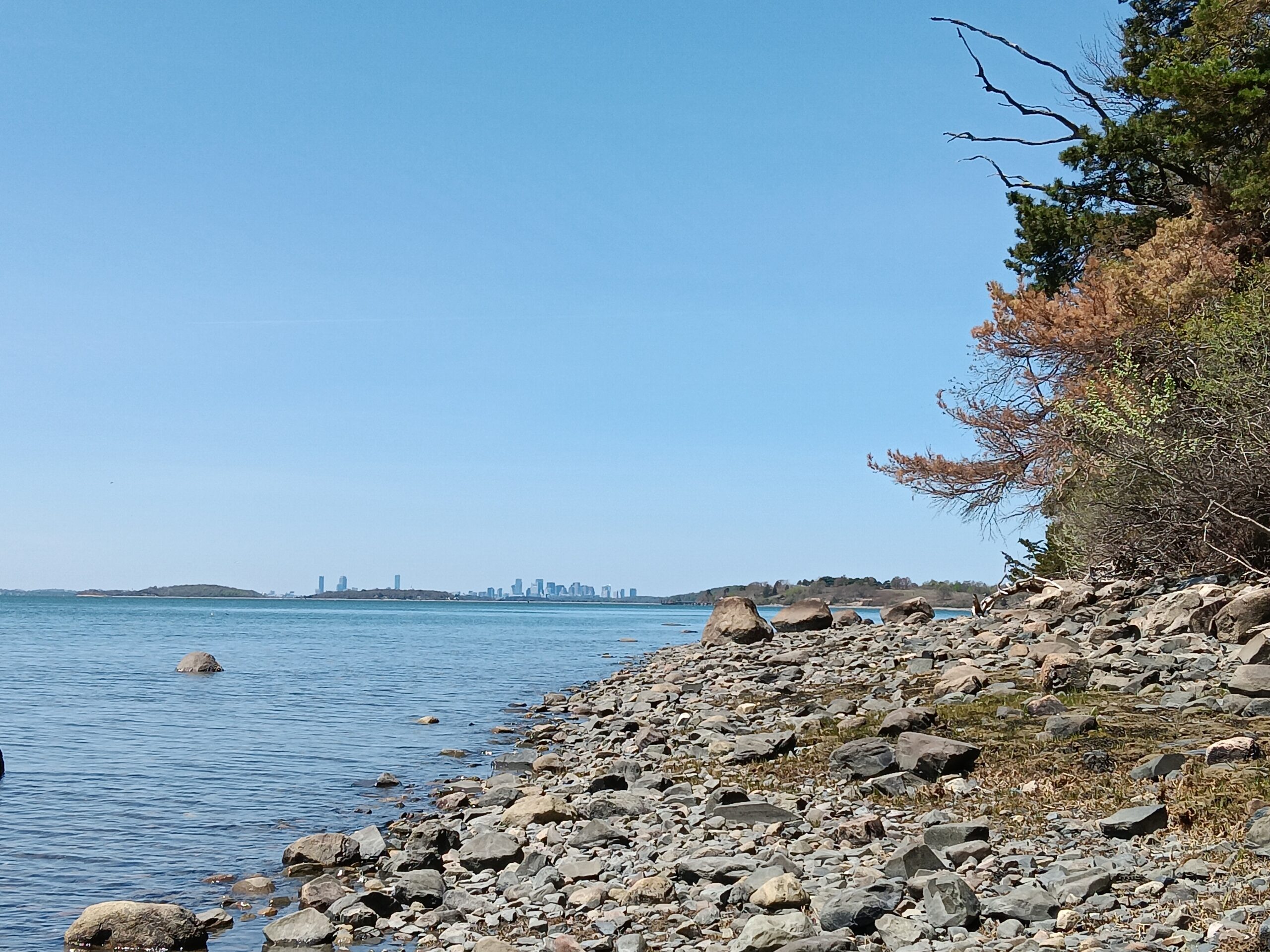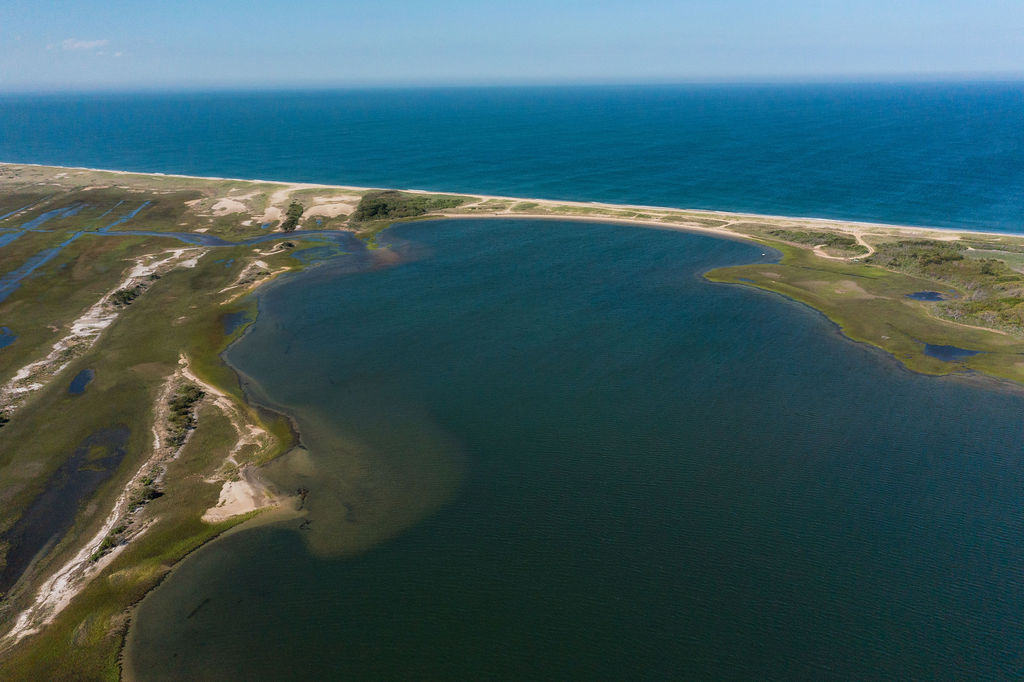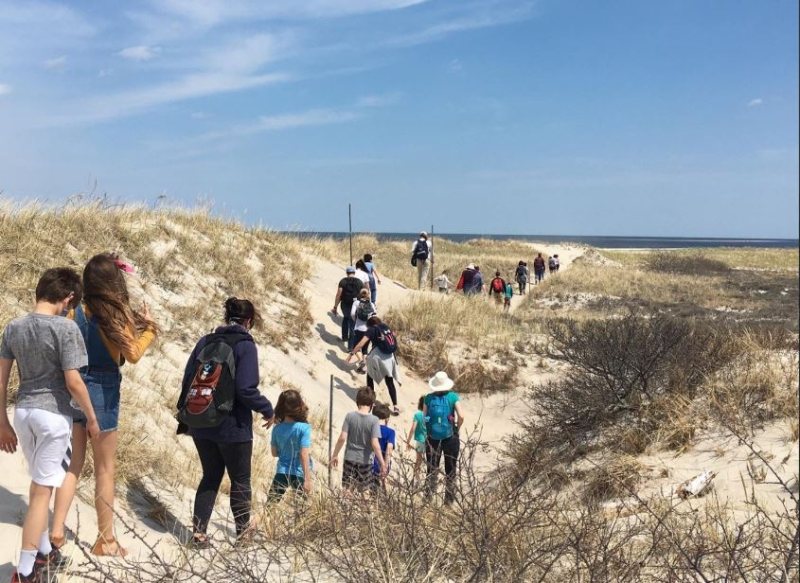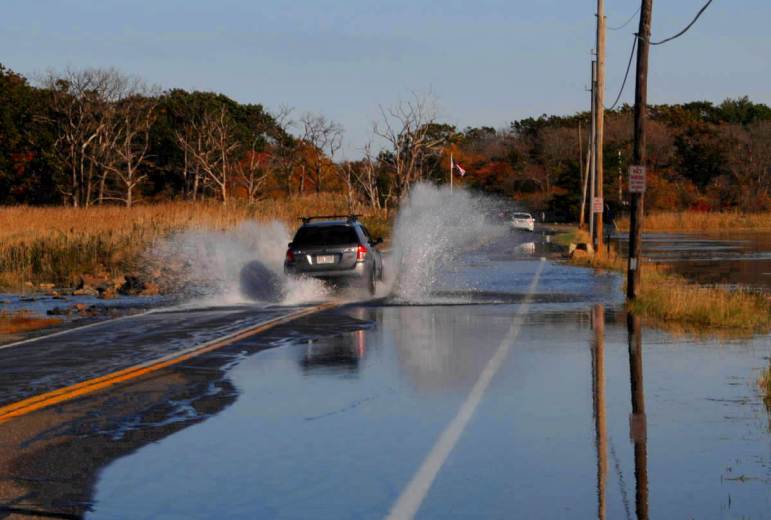
Argilla Road during a king tide, Courtesy Jan Burgess
Argilla Road is iconic in Ipswich, Massachusetts. The gateway to the Crane Estate, which sits perched at its end, and a key point of access for residents, anglers, and clammers, many know it well.
But the road is struggling, facing increasing challenges because of rising sea level exacerbated by more frequent and severe storms. This essential road and the surrounding landscape were identified as one of The Trustees’ properties most susceptible to climate change impacts by an extensive climate vulnerability assessment (CVA) carried out in partnership with the Woods Hole Group in 2017.
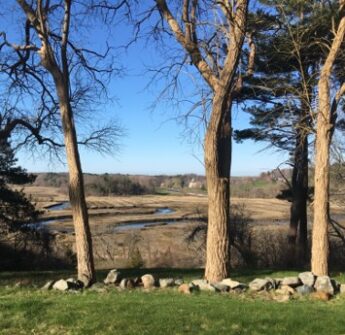
Fox Creek at Low Tide
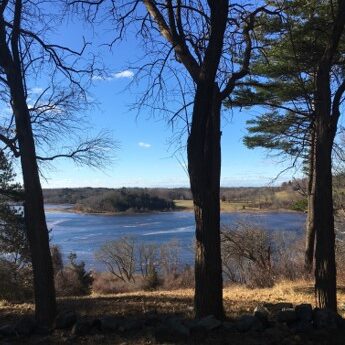
Fox Creek during a king tide
The Science Behind King Tides
In recent years, king tides, or Perigean Spring Tides, as they are known scientifically, have made certain points on Argilla Road inaccessible for hours at a time. The term “King Tide” is a non-scientific term used to describe the highest seasonal tides that occur each year. And those tides keep getting higher.
According to the National Oceanographic and Atmospheric Administration (NOAA), king tides happen when full or new moons and perigees happen at the same time. At new and full moons, tides tend to be higher and lower than average, as gravitational pull causes the oceans to ‘bulge’. Combined with a perigee, which happens once every 28 days, when the moon is closest to the Earth, tides become even larger, with the added gravitational pull sometimes producing an additional three feet of tidal surge at high tide.
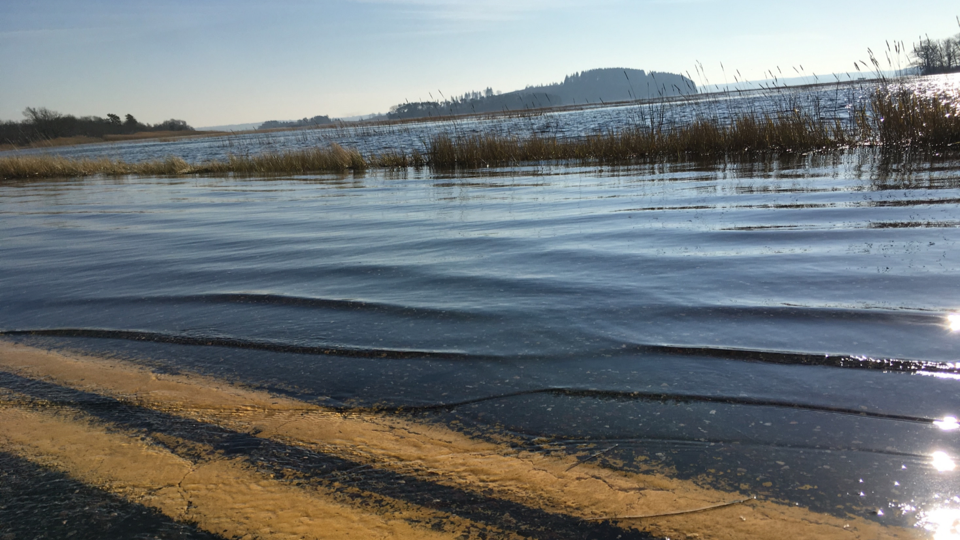
Argilla Road floods during a king tide
What does that mean for us?
King tides, combined with seasonal changes, can cause severe coastal flooding in low-lying areas, as is often the case on Argilla Road. Experts expect that king tides and the flooding associated with them will only continue to increase as the climate continues to change. In addition to causing disruption to daily routine, like heading to the beach, these tides can cause coastal erosion that deteriorates natural landscapes, coastal infrastructure, and cultural resources. For example, king tides continue to impact the Ada K. Damon shipwreck on Steep Hill Beach.
Argilla Road often floods, even on sunny days without storm surge as tides continue to get higher. That means that several times this summer season, visitors will need to plan around the tide to head to and from the beach.
The Trustees are committed to making Argilla Road more resilient in partnership with the Town of Ipswich and the Massachusetts Office of Coastal Zone Management. The project is moving forward, and raising the road could be achieved in a few years’ time.
The Trustees is also making vast improvements to the resiliency of the Great Marsh, which abuts Argilla Road.
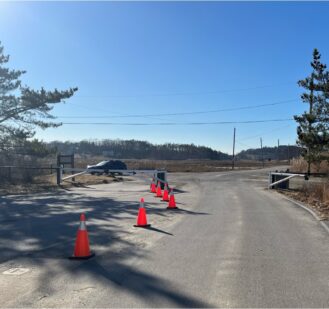
The exit of Crane Beach at low tide
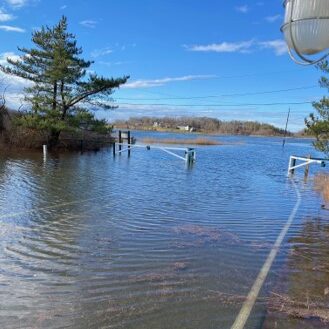
The exit of Crane Beach during a king tide
Rolling with the Tides
For the team at the Crane Estate, king tides have become a source of knowledge-sharing and education that brings new and curious minds to the property.
Director of the Crane Estate, Chris Moore and Regional Education Manager Val Perini collaborated to create a King Tide Hike at the estate, which offers visitors a chance to dive deeper into the impacts of these astronomical events and see the effects first-hand from the Castle Hill property.
Castle Hill becomes island-like at king tides, Val explained. “We get a lot of cool vantage points that we can share with visitors, from the roof of the Great House to outside of the Inn.”
“During a king tide, we can’t see marsh ditches,” she explained. “The whole marsh looks like a body of water, similar to the bay.”
Val brings program participants to Steep Hill Beach to see erosion, walks along the west side of the Great Marsh along the Cedar Point Trail, and takes visitors up to the East side of property near the Inn to see the effects on Argilla Road.
“We can understand the environment only to a certain extent,” shared Val, “There are always going to be unpredictable elements, and that’s what makes this exciting work.”
Val is quick to point out that similar flooding affects many residents who live on Great Neck in Ipswich as well, another issue for the state, town, and local partners to tackle in the face of climate change.
“One thing that makes this more hopeful is being able to celebrate learning, being ambassadors of these issues, and just talking about what’s going on locally,” she shared. “If you’re overwhelmed, talking about things and continuing dialogue can remind us we are all in this together, and lead to collaboration on solutions and positive change.”

Argilla Road during a king tide
If you’re planning to head to Crane Beach this summer, or the Crane Estate at any point soon, be sure to check in on our X account to learn about current conditions. If you find yourself in the Crane Beach parking lot, or looking to enter during a king tide, there’s plenty to make the most of your time on either side of the flooding. Check out things to do at the Beach and Wildlife Refuge, and at the Estate. You can also take part in community science by downloading the MyCoast.org Application on your smartphone and documenting coastal flooding during king tides. Simply download the app, snap a photo, and upload with relevant information!
Visit Crane!